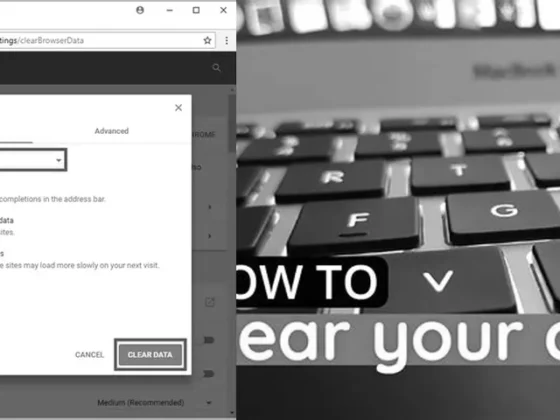Does CrossOver Require Windows? A Comprehensive Guide to Running Windows Software on Mac with CrossOver – Are you tired of being limited by your operating system when it comes to running Windows applications? Well, fear not! CrossOver is here to save the day. But wait, does CrossOver require Windows? That’s the burning question we’re going to answer in this blog post. Whether you’re a Mac user looking to unleash the power of Windows software or a Windows user seeking a seamless experience, we’ve got you covered. Get ready to dive into the world of CrossOver and discover how you can break free from the shackles of your operating system. So buckle up, grab your favorite beverage, and let’s embark on this exciting journey together!
Understanding CrossOver and Its Operating Environment
CrossOver is a powerful tool designed to bridge the gap between Windows applications and non-Windows operating systems. The core purpose of CrossOver is to provide a compatibility layer that allows users to run their favorite Windows programs on Linux, macOS, and ChromeOS. This seamless integration is achieved without the need for a Windows operating system as a base. Unlike traditional methods of running Windows programs on other operating systems, CrossOver eliminates the requirement of purchasing a Windows license or going through the process of installing and configuring the OS.
How CrossOver Translates Windows Commands
For Mac users, CrossOver is especially intriguing. The software translates Windows API calls into macOS API calls in real-time. This means that when you launch a Windows application within CrossOver on a Mac, it communicates directly with macOS, using a translation system to execute commands as if they were native to Mac. It’s this translation mechanism that allows Windows software to run as though it were developed for macOS.
CrossOver Versions: CrossOver+ and CrossOver Life
For those considering CrossOver, it’s important to understand the two main versions available: CrossOver+ and CrossOver Life. CrossOver+ follows an annual subscription model, providing users with continuous updates and support. This model ensures that you always have access to the latest features and compatibility fixes. On the other hand, CrossOver Life offers a one-time purchase option, which may be preferred by users who do not require ongoing updates or those who wish to use the software without a recurring fee.
Choosing the Right Version for Your Needs
When deciding between CrossOver+ and CrossOver Life, consider your long-term software needs. If you anticipate needing to run a wide range of Windows applications that may evolve or get updated over time, CrossOver+ might be the more appropriate choice. However, if your usage is limited to a set of applications with no expected changes, CrossOver Life could be a cost-effective solution.
Running Windows on Mac: Free Options and Limitations
For those who need to use Windows on their Mac, there are a few options available. Boot Camp, Apple’s free multi-boot utility, allows users to run Windows and macOS on the same machine. However, it’s important to note that Boot Camp is not supported on Apple Silicon-based Macs, which means users of these newer models will need to explore other solutions, like CrossOver or virtualization software.
Why Boot Camp Isn’t a Solution for Everyone
Although Boot Camp is a free option for running Windows on Intel-based Macs, it operates by partitioning the hard drive and requires a full Windows installation. This setup is not ideal for those looking to run Windows applications without dedicating a portion of their system solely to Windows. Additionally, the lack of support for Apple Silicon Macs renders Boot Camp an impractical choice for users of the latest hardware.
Running CrossOver Software on Your Machine
Getting started with CrossOver is relatively straightforward. After purchasing and downloading CrossOver, you can install it just like any other application on your Linux, macOS, or ChromeOS system. The installation process is user-friendly and does not require deep technical knowledge. Post-installation, running a Windows application is as simple as selecting it from CrossOver’s interface or installing it using the application’s installer file.
Step-by-Step Guide to Using CrossOver
- Download and install CrossOver on your non-Windows OS.
- Search for the desired Windows application within the CrossOver interface to see if it’s supported.
- If supported, you can directly install the application through CrossOver’s “Install Software” feature.
- If the application is not listed or you have an installation file, use the “Install a Windows Application” option to proceed with the installation.
- Follow the on-screen instructions to complete the application installation.
- Once installed, run the application directly from CrossOver.
Through these steps, users can enjoy the flexibility of running Windows applications on their preferred operating system without the complexities and costs associated with maintaining a Windows environment.
Maximizing Your Experience with CrossOver
To make the most out of CrossOver, it’s important to keep the software updated and to consult the CrossOver compatibility database for information on how well your desired applications will perform. The database is a valuable resource, providing insights into the expected behavior of various Windows applications when run through CrossOver.
Tips for Smooth Operation
- Regularly update CrossOver to ensure compatibility with new applications and operating system updates.
- Check the compatibility database before attempting to install new applications to gauge performance expectations.
- Use the community forums and support resources provided by CrossOver if you encounter any issues.
By following these guidelines, users can enhance their experience and ensure that the software they rely on runs effectively on their non-Windows systems.
Conclusion: Embracing CrossOver for a Seamless Experience
In conclusion, CrossOver is a robust solution for individuals and businesses looking to run Windows applications on Linux, macOS, or ChromeOS without purchasing a Windows license. With its innovative translation technology, CrossOver provides a smooth experience for a wide range of software, making it an invaluable tool for those operating outside the Windows ecosystem. Whether you choose the subscription-based CrossOver+ or the one-time purchase CrossOver Life, this compatibility layer stands as a testament to the versatility and adaptability of modern computing solutions.
FAQ & Related Questions about Does Crossover Require Windows?
Q: What is CrossOver software?
A: CrossOver software is a compatibility layer that allows Windows-based applications to run on Linux operating systems, macOS, or ChromeOS.
Q: Do I need to purchase a new Windows license to use CrossOver?
A: No, CrossOver does not require you to purchase a new Windows license or install and configure the Windows operating system.
Q: How does CrossOver work?
A: CrossOver works by translating Windows commands into Mac commands, allowing you to run Windows software on a Mac.
Q: Can I use CrossOver on a Macbook?
A: Yes, you can use CrossOver on a Macbook. To get Windows on your Macbook, you can use Boot Camp Assistant, which is a free utility provided by Apple.
Q: Are there different versions of CrossOver available?
A: Yes, there are two versions of CrossOver available: CrossOver+ and CrossOver.


